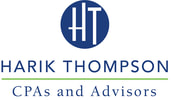|
The Financial Standards Accounting Board has issued an Accounting Standards Update (ASU) aimed at improving financial reporting about leasing transactions. The ASU affects all companies and organizations that lease such assets as real estate, airplanes and manufacturing equipment. Lessees are required to recognize on balance sheets the assets and liabilities for the rights and obligations created by those leases. The update responds to requests from financial statement users for a more faithful representation of an organization’s leasing activities.
Classifications As a result, lessees will be required to recognize assets and liabilities for leases with terms of more than 12 months. The recognition, measurement and presentation of expenses and cash flows arising from a lease by a lessee primarily will depend on its classification as a finance or operating lease. For finance leases, interest on the lease liability is required to be recognized separately from the amortization of the right-to-use asset in the statement of comprehensive income. Repayments of the principal portion of the lease liability are to be classified as financing activities in the statement of cash flows, whereas payments of interest on liability and variable lease payments are to be classified as operating activities. For operating leases, a single lease cost is to be recognized in the statement of comprehensive income based on the allocation of the cost of the lease over the lease term, generally on the straight-line basis. All cash payments are to be classified within operating activities on the statement of cash flows. Disclosures This is consistent with current Generally Accepted Accounting Principles, but unlike today’s GAAP, which requires only capital leases to be recognized on the balance sheet, the new ASU will require both types of leases to be recognized on the balance sheet. The ASU also will require disclosures to help financial statement users better understand the amount, timing and uncertainty of cash flows arising from leases, including qualitative and quantitative requirements that provide additional information about the amounts recorded in financial statements. This guidance doesn’t apply to the following:
Lessor accounting will remain largely unchanged from current GAAP, but the ASU contains some targeted improvements that will align, where necessary, lessor accounting with the lessee accounting model and with the updated revenue recognition guidance issued in 2014. Financial Reporting The FASB and the International Accounting Standards Board (IASB) first embarked on a joint project in 2006 to improve the financial reporting of leasing activities. Since then, the FASB and the IASB have issued three documents for public comment that generated more than 1,700 comment letters. These lease standards intend to provide investors globally with more transparent, comparable information about lease obligations held by companies and organizations. The FASB’s ASU on leases will take effect for fiscal years and interim periods within the fiscal years beginning after December 15, 2019, and for interim periods within fiscal years beginning after December 15, 2020. Early application will be permitted for all organizations. The new guidance establishes the principles to report transparent and economically neutral information about the assets and liabilities that arise from leases. For additional guidance, contact us today. Comments are closed.
|
Newsletter articles are posted every 2 weeks. If you would like to have our e-newsletter delivered directly to your inbox, please sign up. Your information is confidential; you can unsubscribe at any time. Subscribe. Categories
All
|
Proudly powered by Weebly

 RSS Feed
RSS Feed